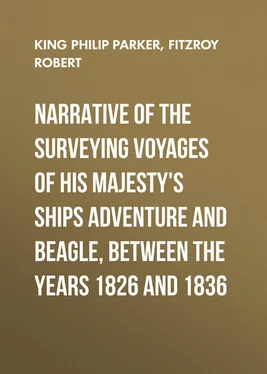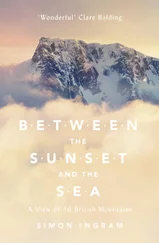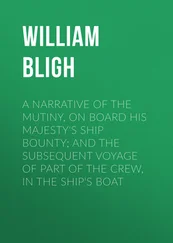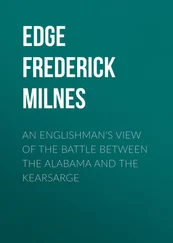Robert Fitzroy - Narrative of the surveying voyages of His Majesty's ships Adventure and Beagle, between the years 1826 and 1836
Здесь есть возможность читать онлайн «Robert Fitzroy - Narrative of the surveying voyages of His Majesty's ships Adventure and Beagle, between the years 1826 and 1836» — ознакомительный отрывок электронной книги совершенно бесплатно, а после прочтения отрывка купить полную версию. В некоторых случаях можно слушать аудио, скачать через торрент в формате fb2 и присутствует краткое содержание. Издательство: Иностранный паблик, Жанр: foreign_antique, foreign_prose, на английском языке. Описание произведения, (предисловие) а так же отзывы посетителей доступны на портале библиотеки ЛибКат.
- Название:Narrative of the surveying voyages of His Majesty's ships Adventure and Beagle, between the years 1826 and 1836
- Автор:
- Издательство:Иностранный паблик
- Жанр:
- Год:неизвестен
- ISBN:нет данных
- Рейтинг книги:3 / 5. Голосов: 1
-
Избранное:Добавить в избранное
- Отзывы:
-
Ваша оценка:
- 60
- 1
- 2
- 3
- 4
- 5
Narrative of the surveying voyages of His Majesty's ships Adventure and Beagle, between the years 1826 and 1836: краткое содержание, описание и аннотация
Предлагаем к чтению аннотацию, описание, краткое содержание или предисловие (зависит от того, что написал сам автор книги «Narrative of the surveying voyages of His Majesty's ships Adventure and Beagle, between the years 1826 and 1836»). Если вы не нашли необходимую информацию о книге — напишите в комментариях, мы постараемся отыскать её.
Narrative of the surveying voyages of His Majesty's ships Adventure and Beagle, between the years 1826 and 1836 — читать онлайн ознакомительный отрывок
Ниже представлен текст книги, разбитый по страницам. Система сохранения места последней прочитанной страницы, позволяет с удобством читать онлайн бесплатно книгу «Narrative of the surveying voyages of His Majesty's ships Adventure and Beagle, between the years 1826 and 1836», без необходимости каждый раз заново искать на чём Вы остановились. Поставьте закладку, и сможете в любой момент перейти на страницу, на которой закончили чтение.
Интервал:
Закладка:
These records of Cordova and Wallis made me feel not a little apprehensive for the health of the crew, which could not be expected to escape uninjured through the rigours of such a climate. Nor were the narratives of Byron or Bougainville calculated to lessen my anxiety. In an account, however, of a voyage to the strait by M. A. Duclos Guyot, the following paragraph tended considerably to relieve my mind upon the subject: – "At length, on Saturday the 23d of March, we sailed out of that famous Strait, so much dreaded, after having experienced that there, as well as in other places, it was very fine, and very warm, and that for three-fourths of the time the sea was perfectly calm."
In every view of the case, our proximity to the principal scene of action occasioned sensations of a peculiar nature, in which, however, those that were most agreeable and hopeful preponderated. The officers and crews of both ships were healthy, and elated with the prospect before them; our vessels were in every respect strong and sea-worthy; and we were possessed of every comfort and resource necessary for encountering much greater difficulties than we had any reason to anticipate.
There has existed much difference of opinion as to the correct mode of spelling the name of the celebrated navigator who discovered this Strait. The French and English usually write it Magellan, and the Spaniards Magallanes; but by the Portuguese (and he was a native of Portugal) it is universally written Magalhaens. Admiral Burney and Mr. Dalrymple spell it Magalhanes, which mode I have elsewhere adopted, but I have since convinced myself of the propriety of following the Portuguese orthography for a name which, to this day, is very common both in Portugal and Brazil.
CHAPTER II
Enter the Straits of Magalhaens (or Magellan), and anchor off Cape Possession – First Narrow – Gregory Bay – Patagonian Indians – Second Narrow – Elizabeth Island – Freshwater Bay – Fuegian Indians – Arrival at Port Famine.
A contrary tide and light winds detained us at anchor near Cape Virgins until four o'clock in the afternoon, when, with the turn of the tide, a light air carried us past Dungeness Point, aptly named by Wallis from its resemblance to that in the English Channel. A great number of seals were huddled together upon the bank, above the wash of the tide, whilst others were sporting about in the surf. Cape Possession was in sight, and with the wind and tide in our favour we proceeded until ten o'clock, when the anchor was dropped. At daylight we found ourselves six miles to the eastward of the cape. The anchor was then weighed, and was again dropped at three miles from the cape until the afternoon, when we made another attempt; but lost ground, and anchored a third time. Before night a fourth attempt was made, but the tide prevented our making any advance, and we again anchored.
Mount Aymond 11 11 A hill on the north shore of Possession Bay, having near it, to the westward, four rocky summits, which, from a particular point of view, bear a strong resemblance to the cropped ears of a horse or ass. These are described less briefly in the Sailing Directions.
and "his four sons," or (according to the old quaint nomenclature) the Asses' Ears, had been in sight all day, as well as a small hummock of land on the S.W. horizon, which afterwards proved to be the peaked hillock upon Cape Orange, at the south side of the entrance to the First Narrow.
At this anchorage the tide fell thirty feet, but the strength of the current, compared with the rate at which we afterwards found it to run, was inconsiderable. Here we first experienced the peculiar tides of which former navigators have written. During the first half of the flood 12 12 Flowing into the strait from the east towards the west.
or westward tide, the depth decreased, and then, after a short interval, increased until three hours after the stream of tide had begun to run to the eastward.
The following morning (21st) we gained a little ground. Our glasses were directed to the shore in search of inhabitants, for it was hereabouts that Byron, and Wallis, and some of the Spanish navigators held communication with the Patagonian Indians; but we saw none. Masses of large sea-weed, 13 13 Fucus giganteus.
drifting with the tide, floated past the ship. A description of this remarkable plant, although it has often been given before, may not be irrelevant here. It is rooted upon rocks or stones at the bottom of the sea, and rises to the surface, even from great depths. We have found it firmly fixed to the ground more than twenty fathoms under water, yet trailing along the surface for forty or fifty feet. When firmly rooted it shows the set of the tide or current. It has also the advantage of indicating rocky ground: for wherever there are rocks under water, their situation is, as it were, buoyed by a mass of sea-weed 14 14 Usually called by seamen 'kelp.'
on the surface of the sea, of larger extent than that of the danger below. In many instances perhaps it causes unnecessary alarm, since it often grows in deep water; but it should not be entered without its vicinity having been sounded, especially if seen in masses, with the extremities of the stems trailing along the surface. If there be no tide, or if the wind and tide are the same way, the plant lies smoothly upon the water, but if the wind be against the tide, the leaves curl up and are visible at a distance, giving a rough, rippling appearance to the surface of the water.
During the last two days the dredge had furnished us with a few specimens of Infundibulum of Sowerby ( Patella trochi-formis , Lin.), and some dead shells ( Murex Magellanicus ) were brought up by the sounding-lead.
We made another attempt next morning, but again lost ground, and the anchor was dropped for the eighth time. The threatening appearances of the clouds, and a considerable fall of the barometer indicating bad weather, Captain Stokes agreed with me in thinking it advisable to await the spring-tides to pass the First Narrow: the ships were therefore made snug for the expected gale, which soon came on, and we remained several days wind-bound, with top-masts struck, in a rapid tide-way, whose stream sometimes ran seven knots. On the 28th, with some appearance of improving weather, we made an attempt to pass through the Narrow. The wind blowing strong, directly against us, and strengthening as we advanced, caused a hollow sea, that repeatedly broke over us. The tide set us through the Narrow very rapidly, but the gale was so violent that we could not show more sail than was absolutely necessary to keep the ship under command. Wearing every ten minutes, as we approached either shore, lost us a great deal of ground, and as the anchorage we left was at a considerable distance from the entrance of the Narrows, the tide was not sufficient to carry us through. At slack water the wind fell, and as the weather became fine, I was induced to search for anchorage near the south shore. The sight of kelp, however, fringing the coast, warned me off, and we were obliged to return to an anchorage in Possession Bay. The Beagle had already anchored in a very favourable berth; but the tide was too strong to permit us to reach the place she occupied, and our anchor was dropped a mile astern of her, in nineteen fathoms. The tide was then running five, and soon afterwards six miles an hour. Had the western tide set with equal strength, we should have succeeded in passing the Narrow. Our failure, however, answered the good purpose of making us more acquainted with the extent of a bank that lines the northern side of Possession Bay, and with the time of the turn of tide in the Narrow; which on this day (new moon) took place within a few minutes of noon.
As we passed Cape Orange, some Indians were observed lighting a fire under the lee of the hill to attract our notice; but we were too busily engaged to pay much attention to their movements. Guanacoes also were seen feeding near the beach, which was the first intimation we had of the existence of that animal southward of the Strait of Magalhaens.
Читать дальшеИнтервал:
Закладка:
Похожие книги на «Narrative of the surveying voyages of His Majesty's ships Adventure and Beagle, between the years 1826 and 1836»
Представляем Вашему вниманию похожие книги на «Narrative of the surveying voyages of His Majesty's ships Adventure and Beagle, between the years 1826 and 1836» списком для выбора. Мы отобрали схожую по названию и смыслу литературу в надежде предоставить читателям больше вариантов отыскать новые, интересные, ещё непрочитанные произведения.
Обсуждение, отзывы о книге «Narrative of the surveying voyages of His Majesty's ships Adventure and Beagle, between the years 1826 and 1836» и просто собственные мнения читателей. Оставьте ваши комментарии, напишите, что Вы думаете о произведении, его смысле или главных героях. Укажите что конкретно понравилось, а что нет, и почему Вы так считаете.












